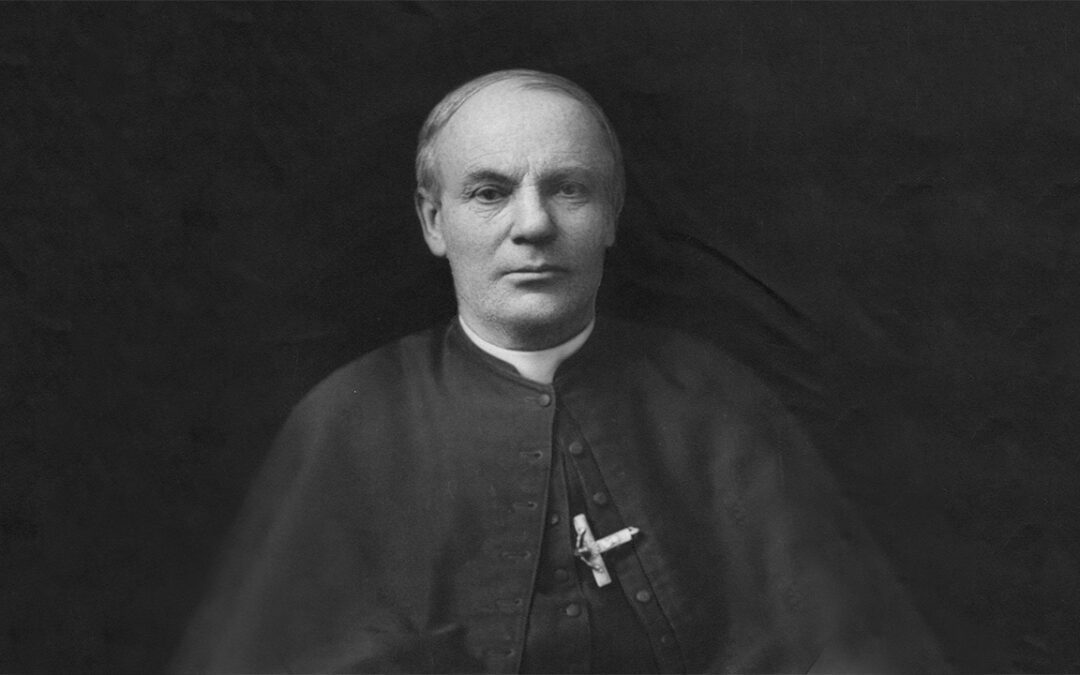I’ll bet that many of you, like me, are fans of “The Antiques Roadshow.” For those of you who don’t know the program, people bring their treasures to experts who tell them how much they are worth. One of the first things that a regular viewer of the show learns is that refinishing a piece of antique furniture destroys much of its value. Apparently, collectors value the signs of wear and tear and the patina of age that accumulates on old pieces through the years. Wouldn’t it be great if it were the same with people? Wouldn’t it be wonderful if people appreciated the beauty of the signs of wear and tear that result from a human life well-lived? That’s certainly the way it should be. One of my favorite writers, G. K. Chesterton, remarks on the willingness of people to travel 5,000 miles to see the ruins of an ancient building, but they won’t bestir themselves to go next door to visit an ancient neighbor. In Japanese art, there is a principle called “Wabi-sabi” that holds that things are never more beautiful than when they are coming into existence or going out of existence. That is why, if you are a photographer, an old barn that is falling into ruin will often make a far more beautiful photograph than a barn that was built ten years ago. But in our society, where there are countless television programs about cosmetic surgery, and people take snake venom treatments for facial wrinkles, the beauty of the old is not appreciated. It’s as if we are all “Wabi” and no “Sabi!”
I’m reminded of one of the lesser-known plays of Shakespeare, Coriolanus, which is set in Ancient Rome. Coriolanus is a great general. His friends want him to stand for political office. In order to be elected, he needs to win the approval of the Roman populace. His friends tell him that in order to win the support of the people, he need only stand before them and show them the scars and wounds on his body, acquired during years of defending the city in battle. This idea has special significance for us in the United States, so close to Independence Day, when we think of all of the wounds and scars, visible and invisible, that people have suffered through the years in defense of the freedoms that we enjoy as Americans. I think we all agree that those wounds and scars are, in a sense, beautiful, because of the love and sacrifice that they represent. I believe that not only battle scars, but all of the evidence of a life welllived that marks us as humans has a similar beauty. After all, while someone who reaches middle-age with a face seemingly unaffected by the passage of the years might still warrant the attention of a fashion photographer, a face lined by years of care, compassion, grief, and laughter, is worthy of a Rembrandt.
One of my most precious memories associated with the Eucharist is related to Fr. Tony Lauck, a priest of my order who was a fine sculptor. By the time I knew Fr. Tony, he was quite old, and had spent many years trying to give visual expression to the love of Christ. When he presided at Mass, it was a great privilege to see his sensitive artist’s hands, now clearly the hands of an old man, hold the bread and wine. It was an occasion of surpassing beauty.
In India, they tell the story of a scorpion that had climbed out onto the end of a branch. The branch was over a river. The river was in flood, and the water was rising. It was clear that the scorpion was about to drown. A holy man came along and saw the scorpion. He determined to save it, so he climbed out onto the branch, and reached out to the scorpion. The scorpion stung his hand, but the man didn’t give up. Time and again, he reached out to save the scorpion, and time and again he was stung. Finally, the man said to the scorpion, “Why do you keep stinging me, don’t you understand that I’m trying to save you?” The scorpion replied to the holy man, “You are trying to save me because that is your nature. I am stinging you because it is my nature to do so. Just because you are acting according to your nature as a holy man, why should I stop acting according to my nature as a scorpion?” This story is interesting in a lot of ways, but what strikes me about it is that the marks left on the holy man’s hands by the scorpion stings are beautiful, because they betoken what is truly human about him, what is holy about him.
In our reading from Galatians, St. Paul claims, “The marks on my body are those of Jesus.” If we accept our Lord’s invitation to spend our lives laboring for the Kingdom of God- if we trust God enough to allow ourselves to be vulnerable to the hurting, sometimes hurtful, people God sends our way- then we will be wounded. We will be scarred. But our wounds, like Paul’s, will be the wounds of Christ. And they, and we, will be beautiful. This is the way to holiness. It is a way characterized by unshakable hope and profound joy. If we follow it, the clearest mark upon us will be the mark of the peace of Christ, which we celebrate in our Sunday Eucharist.”

Rev. Charles B. Gordon, C.S.C., is co-director of the Garaventa Center for Catholic Intellectual Life and American Culture at the University of Portland. He writes and records a regular blog called “Fractio Verbi.



